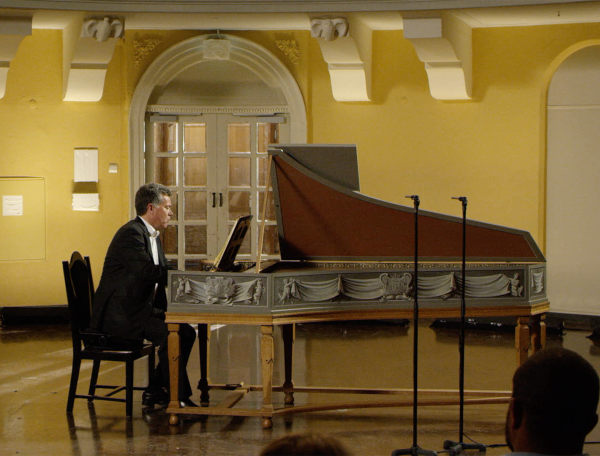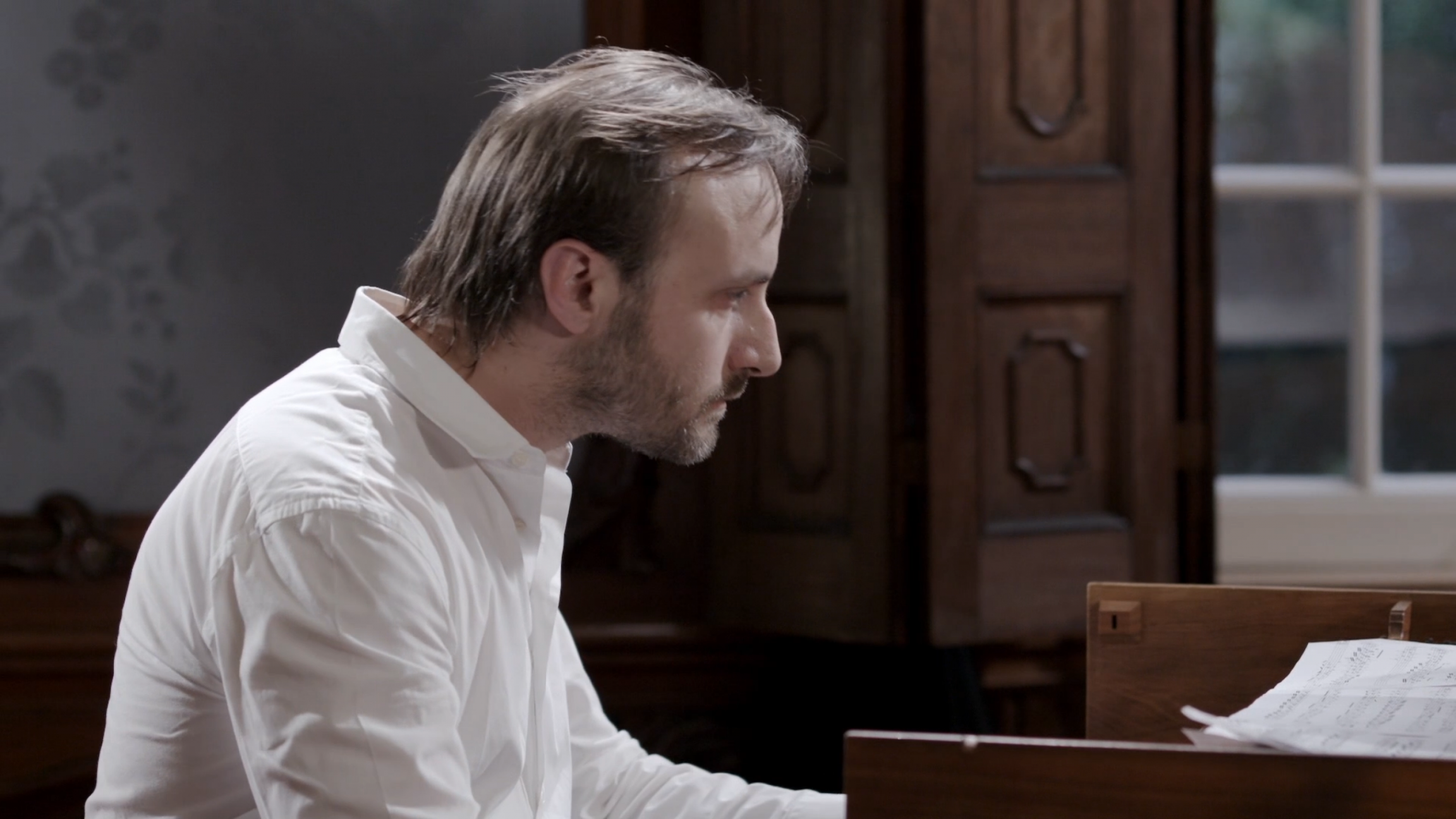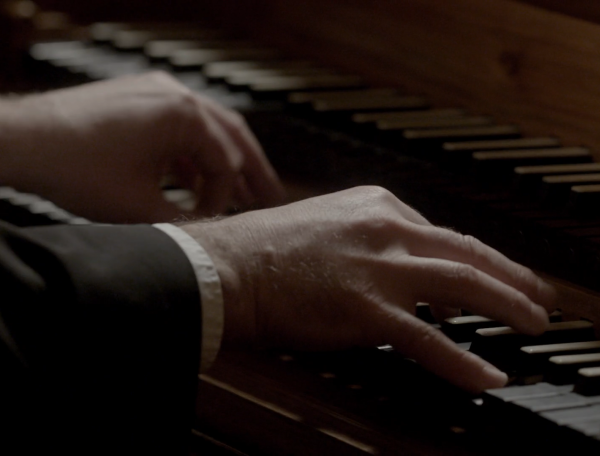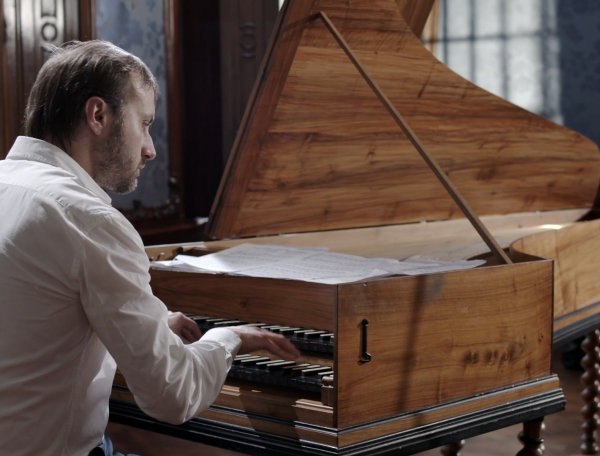

Toccata in D major
BWV 912 performed by Bertrand Cuiller
at the Bartolotti House, Amsterdam
Behind the music
Extremely electric
Bach experiments with the Italian keyboard tradition
This Toccata in D major is the most popular of Bach’s seven toccatas. Bertrand Cuiller, too, has played it very often in the past. “The piece is very theatrical”, he says. “It is extremely ‘electric’”. The powerful opening, which feels very improvised, is followed by a more well-thought-out section, in which various themes enter into dialogue. An expressive recitative forms the transition to an adagio in the unusual key of F-sharp minor. The adagio is conceived as a fugue, but according to Cuiller it is also a bit like a lamento.
Bach builds the dramatic tension up again in a second recitative and eventually lets rip with ‘fireworks’. The toccata closes with a wild dance that is strongly reminiscent of a gigue. Based on a fairly simple idea, Bach uses every possible key in rapid tempo. This sort of piece really shows the tempestuous side of Bach, thinks Cuiller. “It was not only in his mind”.
In such works from his youth, Bach transgresses every harmonic limit imaginable. As there is no surviving manuscript by Bach, editions must be based on later sources, and we know that Bach’s music was ‘cleaned up’ by some publishers. Partwriting and chromaticism that did not comply with the ‘rules’ (which Bach himself did not follow) were regularly corrected – also among versions of this Toccata. Who knows what gems of inventiveness lie in wait somewhere in a faraway archive?
Seven toccatas, BWV 910-916
The seven toccatas by Bach can be regarded as a conclusion to his early period as a keyboard composer. He did not conceive of them as a collection himself; that only happened after his death. Yet they do show a clear relationship, with regard to both form and style. They are extensive works with multiple sections. But unlike the later suites and partitas, the sections flow more or less seamlessly into one another. Here, Bach still has one foot firmly in the seventeenth century.
- BWV
- 912
- Title
- Toccata in D major
- Instrument
- harpsichord
- Genre
- harpsichord works
- Serie
- Seven Toccatas (clavier)
- Year
- 1705-1708
- City
- Weimar?
- Special notes
- BWV 912a is an early version, probably intended for organ
Extra videos
Vocal texts
Original
Translation
Credits
-
- Release date
- 13 April 2018
-
- Recording date
- 27 May 2017
-
- Location
- Bartolotti House
-
- Harpsichordist
- Bertrand Cuiller
-
- Harpsichord
- Bruce Kennedy, 1989 after Michael Mietke
-
- Director, camera en editor
- Gijs Besseling
-
- Music recording
- Guido Tichelman, Pim van der Lee
-
- Music edit and mix
- Guido Tichelman
-
- Camera and lights
- Danny Noordanus
-
- Data handling
- Eline Eestermans
-
- Interview
- Jan Van den Bossche
-
- Producer concert
- Marco Meijdam
-
- Producer film
- Jessie Verbrugh
-
- Acknowledgement
- Vereniging Hendrick de Keyser
Discover
Help us to complete All of Bach
There are still many recordings to be made before the whole of Bach’s oeuvre is online. And we can’t complete the task without the financial support of our patrons. Please help us to complete the musical heritage of Bach, by supporting us with a donation!

